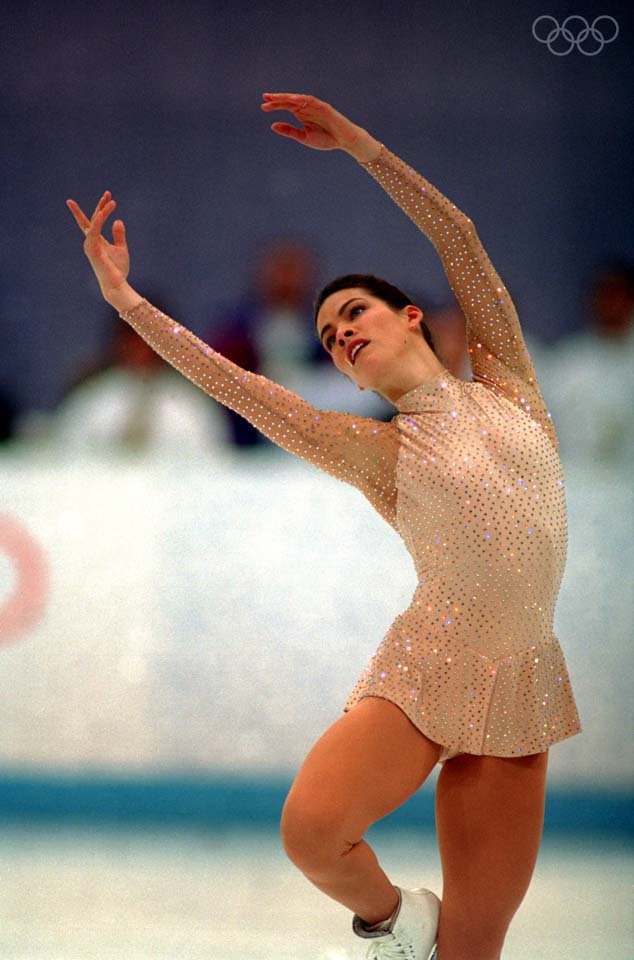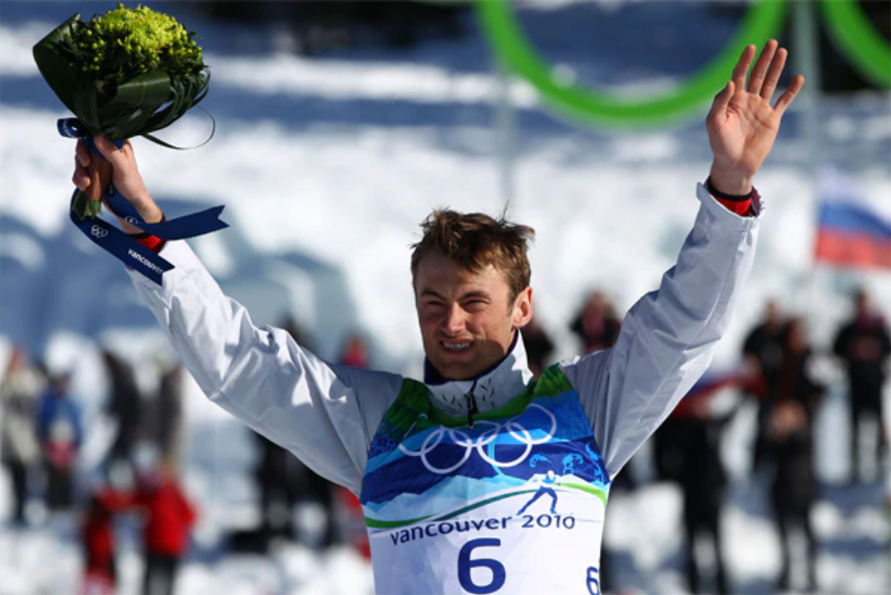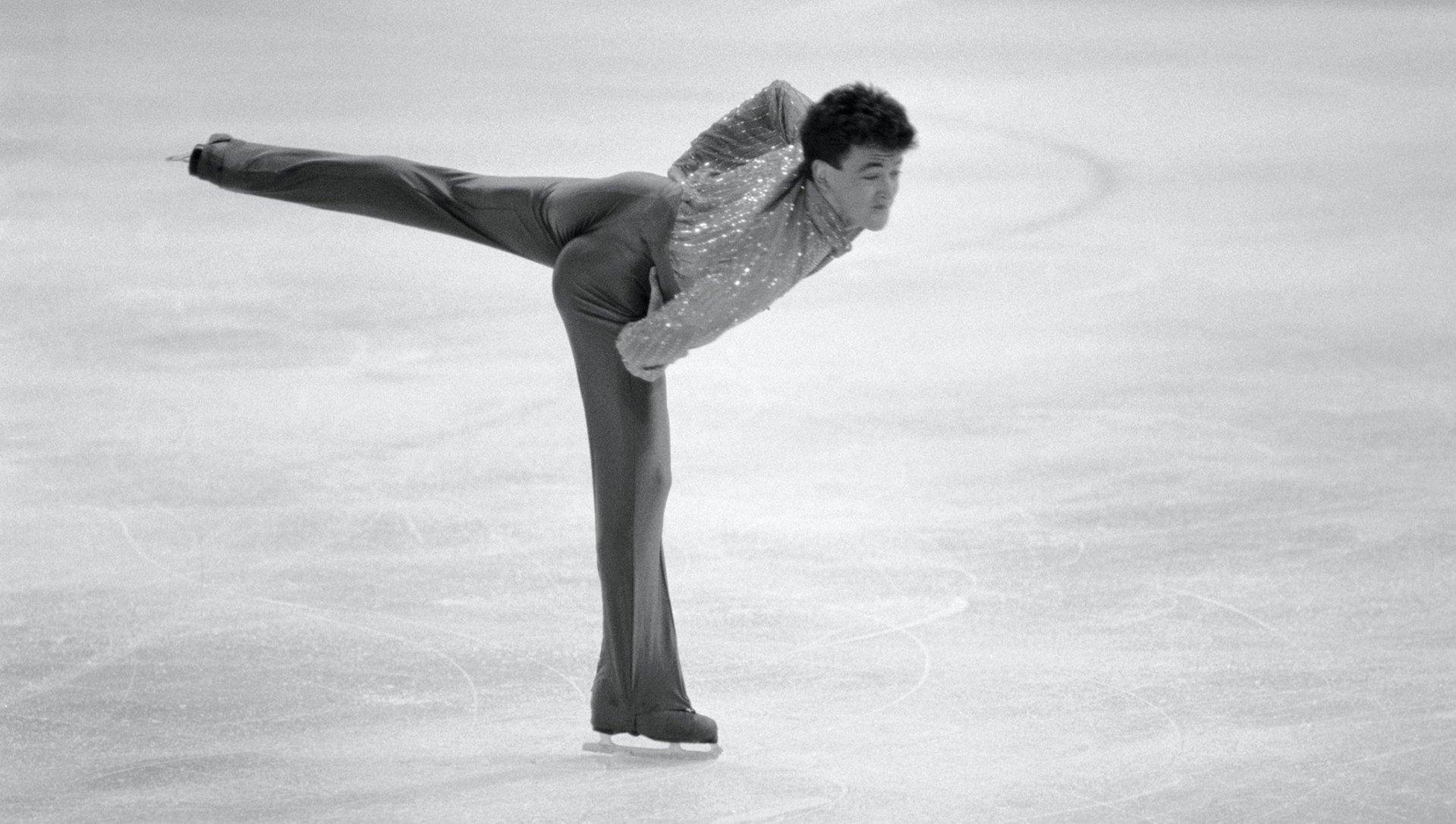Sporting Rivalries
Next up in our Sporting Rivalries series is the Winter Olympics.
For many the Winter Olympics are the pinnacle of a sporting career, with stakes, pressure and expectation at their highest and where rivalries become fiercely competitive whether individual or national.
 Canada - USA: Women’s Ice Hockey (1998-Present)
Canada - USA: Women’s Ice Hockey (1998-Present)
The two female heavyweights in ice hockey, who have dominated the sport for nearly three decades, are the United States and Canada. The two countries have contested five out of the six gold medal matches since women’s ice hockey was introduced to the Winter Olympics in 1998, producing some particularly tense and thrilling encounters in the process.
The USA topped the podium in 1998, before enduring 20 years of Canadian dominance. Canada narrowly won the gold medal match 3-2 in 2002, and in 2006 the USA were stunned by Sweden in the semis and had to settle for bronze, whilst the Canadians marched to their second consecutive gold medal. Canada made it a hat trick of golds in 2010 as they defeated the USA 2-0 in the final.
The 2014 Winter Olympics saw one of the most nail biting and dramatic match ups between the two countries. The USA had led 2-0 after the first two periods but with just three and a half minutes remaining, Canada pulled one back, and with less than a minute left, they levelled the scores up to send the game into a sudden death overtime. Four years previously, Marie-Philip Poulin had scored the two decisive goals for Canada in the gold medal match, and she was once again the hero scoring the winner in overtime to complete a remarkable comeback.
There was to be similar drama four years later at the PyeongChang Games. The USA had opened the scoring before two goals in the space of five second period minutes gave the Canadians the lead – Poulin once again on the scoresheet. However, with six minutes remaining, the USA levelled, and the gold medal match was once again sent into overtime. Nothing could separate the two sides during the additional 20 minutes, resulting in the game being decided by a shootout for the first time in women’s ice hockey history. The USA held their nerve and ended a 20 year wait for Olympic gold.
This is a rivalry consisting of the very best in their sport going toe to toe on the biggest stage but it is also a rivalry with a unique twist since many of the Canadian and USA athletes are club and college teammates during the domestic season. There is no room though for niceties when they pull on their national jerseys particularly during the buildup to the Winter Olympics when rivalry intensifies. While matchups between the very best can sometimes underwhelm, this is a fixture that always delivers.
 Nancy Kerrigan - Tonya Harding: Figure Skating (1994)
Nancy Kerrigan - Tonya Harding: Figure Skating (1994)
Tonya Harding and Nancy Kerrigan were a pair of figure skating rivals from the United States who battled it out on the ice for four years in the build up to the 1994 Winter Olympics in Norway but, unfortunately, it is one infamous incident away from the rink that will see their rivalry remembered forever.
The pampered and sheltered upbringing stereotype of a figure skater did not apply to either of these athletes. Harding came from an unstable family home, with money so tight that she would dance in her mother’s home-made costumes whilst Kerrigan came from a similarly humble background, with her father having to work multiple jobs to fund her career. In 1991, the pair met at the US Figure Skating Championships, with Harding coming out on top. A month later at the World Championships, the skater from Oregon came out on top once more, taking a silver medal at her first major championships whilst Kerrigan took bronze. That year Harding became the first American woman, and only the second woman in history, to successfully land a triple Axel. But Kerrigan was hot on Harding’s heels, and in 1992 she claimed bronze at the Winter Olympics and silver at the World Championships. The fiercely competitive Harding surprisingly finished fourth at the Olympics and sixth at the World Championships, as her personal life began to spiral out of control.
With the 1994 Winter Olympics in Lillehammer around the corner, the controversy that would define this rivalry reared its ugly head. Kerrigan was attacked after training, sustaining bruising on her leg that forced her to pull out of the National Championships the following night, a competition that Harding went on to win. It soon transpired that the attacker had been hired by Harding’s ex-husband and former bodyguard to break Kerrigan’s leg, forcing her to miss the Winter Olympics.
Kerrigan made a full recovery and was able to compete at the games the following month but Harding underperformed due to a problem with her laces and finished down in eighth whilst Kerrigan took silver and the 16-year-old Ukrainian, Oksana Baiul, surprisingly won the gold. The following month, with evidence and speculation mounting, Harding pleaded guilty to "conspiracy to hinder prosecution” in connection with the attack on Kerrigan, was stripped of her 1994 National Championships title and banned from ever competing again. The rivalry was so iconic that it inspired the 2017 film I, Tonya starring Margot Robbie.
Italy - Norway: Cross Country Skiing Relay (1992-2002)
The 4x10km Men’s Cross-Country Skiing relay has seen some of the tightest finishes in distance sport with two nations dominating the sport for over a decade.
Norway took the gold in 1992 and Italy the silver. Fast forward two years and Norway were looking to defend their title on home soil. Eight-time Olympic gold medalist Björn Daehlie entered the stadium for the last stretch of the grueling 10km leg but, in the final few strides, Italian Silvio Fauner came from behind to silence the home crowd and overtake the Norwegian on the line. After 40 punishing kilometers, over an hour and 40 minutes of skiing, the relay was won by the Italians by just 0.4 seconds, royally stealing the thunder of the reigning champions and hosts.
 In Nagano in 1998, Norway were out for revenge and yet again, the mammoth race was won by a fraction of a second. Norway’s Thomas Alsgaard flung his right ski forward on the line while Fauner, the hero from four years ago, dived headfirst over the finish. It was gold to Norway, this time by 0.2 seconds.
In Nagano in 1998, Norway were out for revenge and yet again, the mammoth race was won by a fraction of a second. Norway’s Thomas Alsgaard flung his right ski forward on the line while Fauner, the hero from four years ago, dived headfirst over the finish. It was gold to Norway, this time by 0.2 seconds.
In 2002, the gold medal came down to the final stretch of the final leg once more. Italian Christian Zorzi, one of the greatest sprint skiers on the planet, took the lead on the final turn. However, Alsgaard provided another moment of magic for the Norwegians on the final leg by producing a remarkable turn of speed to surge past his rival and secure a second consecutive gold for Norway by 0.3 seconds.
Over the course of three Olympic games, 120km and over five hours of skiing, three gold medals had been determined by less than a second in total, making this one of the most closely fought rivalries in sporting history.
USA - USSR: Ice Hockey (1980)
At the 1980 Winter Olympics, political tensions were heightened between the United States and the USSR due to the ongoing Cold War. In the buildup to USA versus the Soviet Union, US President Jimmy Carter announced his country was planning on boycotting the 1980 Summer Olympics in Moscow.
The two countries met in the final four medal round of the ice hockey. The USSR were the reigning champions, having taken the gold medal in five of the previous six Winter Olympic games and were a team made up of experienced professional players who had not lost a hockey match at the Olympics since 1968. Meanwhile, the USA squad predominantly consisted of college players and amateurs.
In front of a 10,000 strong American home crowd at Lake Placid, the Soviets took the lead, before being surprisingly pegged back by the plucky underdogs. The USSR regained their advantage midway through the first period, but with one second remaining before the end of the first period, the USA equalized once more. The USSR dominated proceedings in the second period but came up against Jim Craig, in goal for the USA, who was in inspired form and who managed to keep the score to a respectable 3-2 with his heroics.
The USA scored again to level the scores, before Mike Eruzione launched a 25-foot wrist shot past Vladimir Myshkin in the USSR goal. There were still 10 minutes remaining, but the USA survived an onslaught from the Soviet’s to record a remarkable victory and seal one of the all-time great sporting underdog stories. Politically, the victory was seen by the USA as an ideological triumph in the Cold War - they went on to claim the gold medal, while the USSR took silver.
The game was christened ‘The Miracle on Ice’ and inspired an ongoing rivalry between the USA and the USSR in Ice Hockey. Whenever the two nations clash, to this day, ‘The Miracle on Ice’ is still brought up, despite it having taken place nearly 40 years ago. The two countries met at the Winter Olympics in both 2014 and 2018, with Russia emerging victorious on both occasions.
The remarkable game and rivalry led to the 2004 film Miracle starring Kurt Russell.
Sweden - Norway - Cross Country Skiing (1994-Present)
Cross Country Skiing was one of Sweden’s greatest sporting strengths. At the 1980, 84 and 88 games, the country won eight Winter Olympic gold medals in Cross Country Skiing events with only the USSR topping the podium on more occasions.
One can only imagine the Swedes’ horror when they were suddenly overtaken by their Scandinavian neighbours - a nation nearly half the size in population. What has ensued is a remarkable spell of Norwegian dominance on the slopes.

Since hosting the games in 1994, Norway have topped the medal table for cross country skiing at all but two games, pocketing a staggering 29 gold medals in the process. Sweden made a brief comeback in 2006, as they finished at the summit of the medal table with three golds, whilst rivals Norway failed to record a single first place finish.
However, the Norwegians bounced back in style, topping the medal table four years later with five golds. The 2010 games saw some tantalizingly close races between the two rivals, as they battled it out at the summit of the Cross Country Skiing medal table. Marit Bjørgen of Norway beat Anna Haag of Sweden in the 15km pursuit by less than two seconds, whilst just a second separated third place Johan Olsson of Sweden and first place Petter Northug of Norway in the 30km pursuit.
 Northug himself has been influential in stoking the Norway-Sweden fire. The Norwegian skier enjoyed mocking Sweden and riling the Swedish media whenever he claimed gold. The press got their own back in 2014 when Northug finished down in 17th in the Skiathlon, with one journalist asking: “How does it feel to be beaten by four Swedes?” When Northug was not selected for the 2018 squad, Swedish journalists brought along a cardboard cutout of the Norwegian talisman to the Norwegian press conference.
Northug himself has been influential in stoking the Norway-Sweden fire. The Norwegian skier enjoyed mocking Sweden and riling the Swedish media whenever he claimed gold. The press got their own back in 2014 when Northug finished down in 17th in the Skiathlon, with one journalist asking: “How does it feel to be beaten by four Swedes?” When Northug was not selected for the 2018 squad, Swedish journalists brought along a cardboard cutout of the Norwegian talisman to the Norwegian press conference.
The previous three Winter Olympics have seen Norway-Sweden one-two at the top of the Cross Country Skiing medal table. Beating Sweden is a real source of pride for the Norwegians, but it is the antics of the press that makes this rivalry even more entertaining.
Not Forgetting…
Austria and Switzerland are two neighbouring countries with the Alps sandwiched between the pair, so it comes as no surprise that they share a terrific rivalry on the slopes. Austria were the real force to be reckoned with in Alpine Skiing, taking just as much joy in topping the medal table as they did in finishing ahead of rivals Switzerland. Between 1988 and 2006, Austria won 28 medals in the various events, compared to Switzerland’s five. However, the tide turned briefly in 2010, as Switzerland won two golds to Austria’s one. Although the Austrians have regained the bragging rights at the past two Olympics, it has been a much tighter affair, with just the odd medal now separating the pair at the summit of the Alpine Skiing medal table.
During the 1988 Olympics, there were two hugely hyped Figure Skating rivalries on the ice. Both East Germany’s Katarina Witt and Debi Thomas from the USA chose to dance to the same music (Bizet’s Carmen), in a rivalry which was branded ‘the Battle of the Carmens’. Thomas ended up taking bronze, whilst Olympic champion Witt defended her title.
 At the same games, ‘the Battle of the Brians’ was taking place in the men’s Figure Skating, as American Brian Boitano and Canadian Brian Orser headed to Calgary as national champions and favourites to take the gold medal. The pair were inseparable after the first two phases of competition, meaning that whoever won the final phase - the free skating segment - would top the podium. During their performances Boitano landed two triple Axils in a faultless routine, whilst Orser landed seven triple jumps. On the tightest of decisions, the judges narrowly awarded gold to Boitano and silver to Orser.
At the same games, ‘the Battle of the Brians’ was taking place in the men’s Figure Skating, as American Brian Boitano and Canadian Brian Orser headed to Calgary as national champions and favourites to take the gold medal. The pair were inseparable after the first two phases of competition, meaning that whoever won the final phase - the free skating segment - would top the podium. During their performances Boitano landed two triple Axils in a faultless routine, whilst Orser landed seven triple jumps. On the tightest of decisions, the judges narrowly awarded gold to Boitano and silver to Orser.
A similarly enthralling rivalry unfolded on the ice in 2010 between Yu Na Kim from South Korea, and Mao Asada from Japan. Asada was the darling of the Japanese media thanks to her engaging personality and elegance on the ice, but the three time world champion was denied an elusive Olympic gold medal by Kim, who made history by claiming South Korea’s first ever gold in women’s Figure Skating.
South Korea’s real forte at the Winter Olympics is short track Speed Skating, where they enjoy a closely fought rivalry with China. South Korea finished behind their rivals in the speed skating medal table in 2010 and 2014, but on home soil in 2018, they regained the bragging rights. The 2018 games featured some thoroughly entertaining races between the two nations: China’s Wu Dajing broke the world record to finish ahead of South Korea’s Hwang Dae-heon and Lim Hyo-jun in the men’s 500m, while Choi Min-jeong of South Korea finished 0.8 seconds ahead of 17-year-old Chinese skater Li Jinyu in the women’s 1,500m.
For more Olympic or Ice Hockey schedules and information, head over to the Fixture Calendar to ensure you never miss a minute of all your favourite sporting action.
Written in October 2019
Photos by Olympics